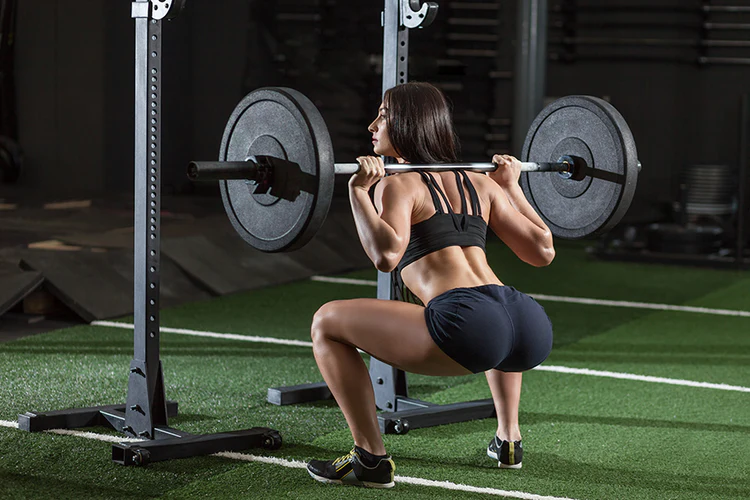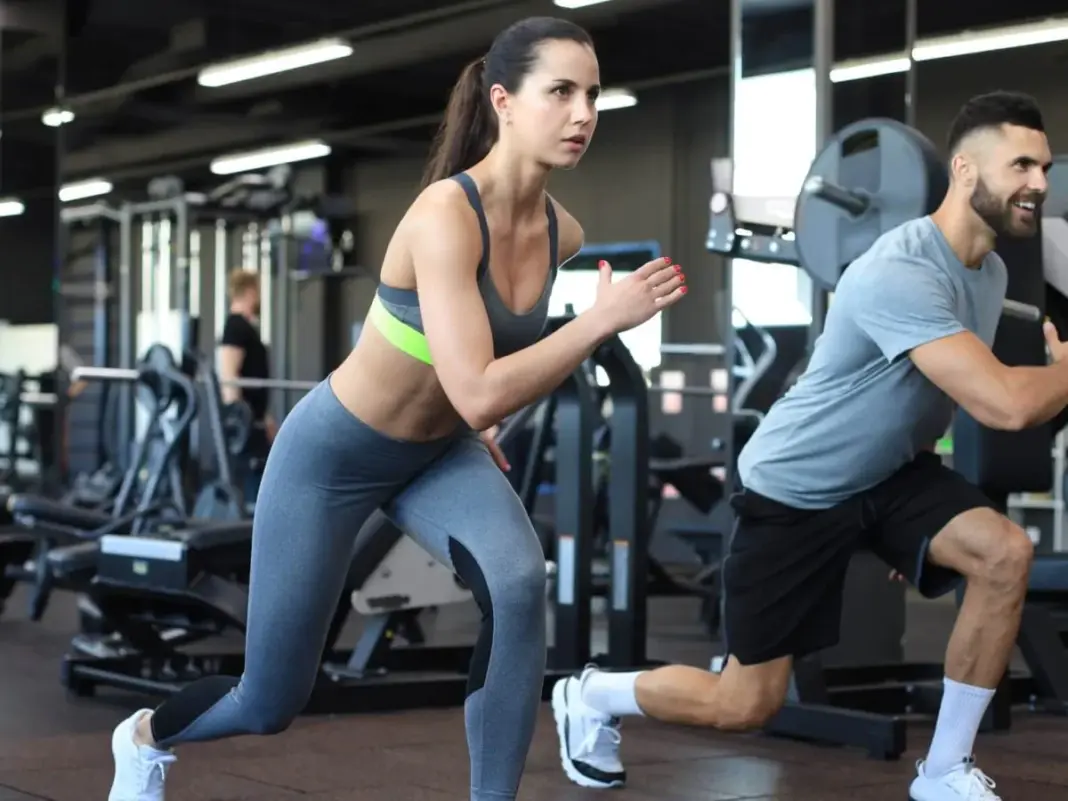Best Glute Exercises for Mass: Science-Backed Rankings and Bodybuilder Strategies
For any serious lifter chasing a powerful, aesthetic, and well-balanced physique, glute development isn’t optional — it’s essential. The glutes aren’t just about looks. They’re performance drivers, posture stabilizers, and foundational to strength in movements like squats, deadlifts, and sprints.
But let’s be clear: if you’re still relying on squats alone to build your glutes, you’re leaving serious gains on the table.
This guide ranks the most effective glute mass-builders using biomechanics, EMG (electromyographic) studies, and real-world feedback from top-level bodybuilders and strength athletes.
Whether you’re just starting or pushing for elite-level posterior development, this article will guide you with the what, why, and how of training glutes for maximum mass.
Why Glute Training Deserves High Priority
The gluteus maximus is the largest muscle in the human body, and one of the strongest. It plays a primary role in hip extension, pelvic control, lumbopelvic stability, and lower body strength.
Big glutes = big lifts. Period.
Well-developed glutes will:
- Boost deadlift and squat performance
- Improve sprint speed, jumping ability, and athleticism
- Stabilize hips and spine, reducing injury risk
- Enhance symmetry and aesthetics from the side and rear view
Neglecting glute development isn’t just a missed opportunity for better performance — it’s a physique-killer.
Ranking the Best Glute Exercises for Mass
We’ve broken down the glute exercises into three tiers, ranked by:
- EMG activation data (how hard the muscle fires)
- Biomechanical loading (resistance across range of motion)
- Training versatility (how well it fits within hypertrophy programs)
Tier 1: Primary Glute Mass Builders
These are your big-ticket glute movements — compound lifts that place high tension on the glutes across a full range of motion and allow for heavy progressive overload.
Barbell Hip Thrust
- Why it’s #1: EMG studies consistently show this exercise produces the highest glute activation of any lift.
- Mechanics: Peak tension occurs at full hip extension — the shortened range where glutes contract hardest.
- Best Used For: Both heavy strength sets (5–8 reps) and volume/pump work (12–15 reps).
- Pro Tip: Control the eccentric and pause at the top for max recruitment. Add bands or tempo for more challenge.
Bodybuilder Insight: “If you want big glutes, get brutally strong on hip thrusts and learn to feel every rep.”
Romanian Deadlift (RDL)
- Why it’s elite: Targets the glutes in a deep, stretched position — a key driver for hypertrophy.
- Mechanics: Hip hinge pattern that emphasizes glutes and hamstrings in the eccentric phase.
- Best Used For: Moderate weight with tempo (3–4 sec negative), 8–10 rep range.
- Pro Tip: Keep shins vertical and push hips back, not down. Soft knees, tight core, and stretch under control.
Bulgarian Split Squat (Glute-Biased)
- Why it’s elite: Combines deep stretch, unilateral loading, and balance/stability work.
- Mechanics: Hip extension from a deficit-like position, especially with a long stride and torso lean.
- Best Used For: Moderate loading (dumbbells, kettlebells), 8–12 reps per leg.
- Pro Tip: Keep your front shin vertical and lean forward slightly to shift the emphasis from quads to glutes.
Tier 2: Glute Builders with Positional Emphasis
These movements amplify your training by reinforcing contraction, control, and time under tension. Use them as finishers, volume boosters, or to target specific weaknesses.
Cable Kickback
- Strengths: Isolates the glute max in a standing, functional position with constant tension.
- Best Used For: Higher reps (12–20), full range of motion, light to moderate weight.
- Pro Tip: Don’t swing your leg — move slowly, squeeze hard at the top, and keep your core braced.
Step-Up (Glute-Focused)
- Strengths: Builds glute mass through functional hip extension under vertical load.
- Best Used For: 8–12 reps per leg, control descent for glute tension.
- Pro Tip: Use a high step (above knee level), lean slightly forward, and drive through your heel.
Glute Bridge (Feet Elevated or Banded)
- Strengths: Shorter ROM than hip thrusts but delivers a massive pump and metabolic stress.
- Best Used For: High reps (15–25) or burnout circuits after heavy lifts.
- Pro Tip: Use bands for increased lateral glute activation and resist the urge to rush through reps.
Tier 3: Supplemental & Isolation Glute Exercises
These aren’t standalone mass-builders, but they’re incredibly effective when used to prime, activate, or finish your glute sessions. Great for refining shape and stability.
Banded Lateral Walk
- Targets: Glute medius and minimus (lateral glutes)
- Best Used For: Pre-activation before compound lifts or finishers for 20–30 steps per direction.
- Pro Tip: Keep tension in the band the whole time. Don’t let the knees cave.
Frog Pumps
- Targets: Glute max in short range, massive pump
- Best Used For: Burnout sets (20–30 reps) at the end of workouts.
- Pro Tip: Place a plate or dumbbell on your pelvis for extra resistance. Push knees out wide.
Clamshells / Cable Abduction
- Targets: Lateral glutes and deep stabilizers
- Best Used For: Controlled prehab/activation or pre-squat primers.
- Pro Tip: Use slow, controlled reps and squeeze hard at the top.
How to Build a Complete Glute Workout
A good glute day isn’t about doing every exercise — it’s about balancing heavy compound work with activation, isolation, and variety in angles and loading.
Glute Workout Formula:
- 1–2 Tier 1 Exercises: The heavy hitters (hip thrusts, RDLs, split squats)
- 1–2 Tier 2 Exercises: Volume, control, contraction (kickbacks, step-ups, bridges)
- Optional Tier 3 Work: Pre-activation, finishers, or shape/detail work
Sample Glute Hypertrophy Workout
Barbell Hip Thrust – 4 sets of 8 (focus on strong lockout)
Romanian Deadlift – 3 sets of 10 (3-second negatives)
Bulgarian Split Squat – 3 sets of 10 per leg (glute-biased form)
Cable Kickback – 3 sets of 15 per side
Banded Lateral Walk – 2 sets of 20 steps per direction
Optional Finisher: Frog Pumps – 1–2 sets of 25
Progression Tips for Glute Growth
To maximize growth, progressive overload is key — but not just by adding weight. Use all available variables.
Smart Progression Strategies:
- Train Glutes 2–3x/Week: Spread the volume for better recovery and frequency
- Vary Loading Zones: Use heavy (5–8), moderate (8–12), and high-rep (15–25) ranges
- Focus on Tension: Prioritize slow eccentrics, pause reps, and peak contractions
- Track Metrics Weekly: Log reps, sets, weights, and even subjective RPE
- Improve Mind-Muscle Connection: Especially with isolation movements
What to Avoid in Glute Training
Glute growth takes precision. These common mistakes can derail your progress:
Mistake #1: Only Doing Squats
Squats alone aren’t enough — they’re quad-dominant and don’t emphasize glutes fully. Supplement with hip hinges and thrusts.
Mistake #2: Overloading Hip Thrusts with Bad Form
Ego-lifting leads to reduced activation. Thrusts should be controlled, with a strong lockout and full hip extension.
Mistake #3: Skipping Unilateral or Abduction Work
Single-leg and lateral glute work builds balance, symmetry, and structural integrity — don’t skip it.
Mistake #4: Treating Glutes as “Bonus Work”
Glutes should be trained like any other major muscle group — with volume, progression, and intent.
Final Word: Build Glutes With Intent, Not Guesswork
Big glutes don’t come from random workouts or once-a-week squats. They come from smart, structured programming that respects biomechanics, volume, and progression.
Here’s the bottom line:
- Choose the right lifts.
- Train heavy and often.
- Feel every rep.
- Progress every week.
If you train glutes like a bodybuilder — with strategy, tension, and intensity — the results will speak for themselves. Strength, symmetry, and size will follow.
🔗 Related Articles:
- Complete Glute Training Guide
- Barbell Hip Thrust: Form, Programming, and Progressions
- Glute Isolation Movements That Actually Work
- Why Your Glutes Aren’t Growing
- Bodyweight and Band Glute Workouts





